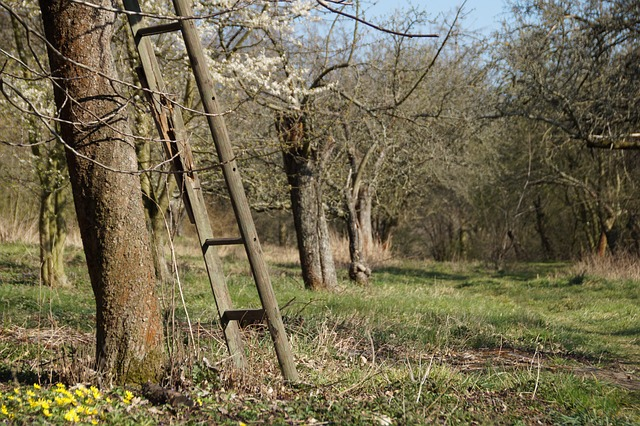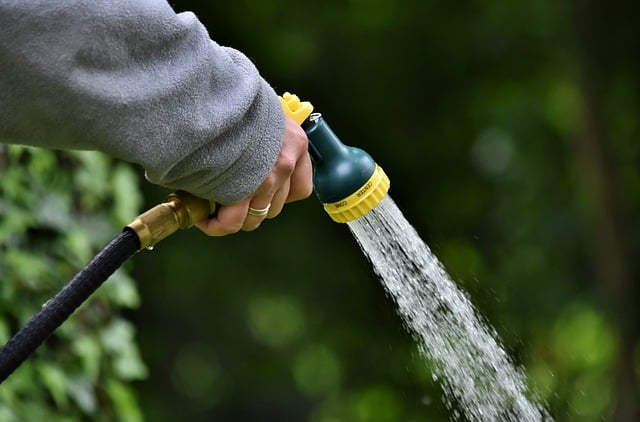Are you ready to transform your outdoor space? Our guide, "How to Start a Garden From Scratch," makes it easy and fun for anyone to begin gardening.
We’ll walk you through simple steps like preparing the soil, planting, and caring for your garden through the seasons. By the end, you’ll have a thriving garden and a new hobby that’s good for you and the environment.
Let’s get started and grow something amazing for 2025!
How to Start a Garden from Scratch
Starting a garden is an exciting and rewarding endeavor that allows you to enjoy fresh produce right from your backyard. Here's a guide on how to begin:
Know Your Gardening Zone:
Knowing your gardening zone is key to successful gardening. It helps you understand your local climate, choose the right plants, and plan for planting and frost dates. By using tools like the USDA Hardiness Zone Map, you can ensure your plants thrive in your region's conditions, making gardening easier and more productive.
Choosing Your Garden Type:
When starting a garden from scratch, choosing the right type of garden is important for success. Think about your available space, personal preferences, and the needs of the plants you want to grow. Traditional in-ground gardens work well for many crops, while raised beds offer better control over soil quality and drainage.
If space is tight, consider vertical gardening using walls, trellises, or vertical planters. This maximizes your space and provides support for climbing plants. Choose the garden type that best suits your goals and resources for a rewarding gardening experience.

Start Small
Begin small with container gardening—perfect for beginners and small spaces. Use containers or grow bags when you are starting.
Focusing on a few vegetables makes it easy to manage and learn the basics. As you gain confidence, you can expand your garden and try new plants and techniques!
Selecting the Right Location:
Choosing the right spot for your garden is key to its success. Look for a sunny area with good soil, as most vegetables and flowers need plenty of sunlight. Place taller plants where they won’t shade smaller ones, ensuring everything gets the light it needs. A well-planned spot sets the stage for a healthy, thriving garden!
Cleaning Your Garden
Cleaning your garden is an important first step. Start by removing debris, weeds, and unwanted plants to create a clean space for your new garden. This helps with better air circulation, sunlight, and prevents weeds from competing for nutrients.
Clearing the area also reduces pests and diseases, giving your plants a healthier environment to grow. A tidy garden sets you up for success and helps create a beautiful space!
Test Your Soil:
Testing your soil’s pH is an important step when starting a garden. It helps you understand the soil's composition and nutrient levels, setting the foundation for healthy plant growth. Whether you choose raised beds or traditional garden beds, knowing your soil's pH will guide you in creating the best environment for your plants. You can easily test your soil with a pH tester from your local or use soil pH tester meter.

Amend Your Garden Soil:
When starting a garden from scratch, it’s important to improve your soil for healthy plant growth. If you’re using a raised bed, mix in compost or organic material to boost fertility and soil structure. Adding mulch, like shredded bark, helps retain moisture and control weeds.
Learning from other gardeners can give you helpful tips on your soil’s needs. Once your bed is enriched, you’ll be ready to plant, giving your garden the best start for success!
Designing the Garden Bed:
When designing your garden bed, keep a few key factors in mind for success. Start small based on the space you have available. Choose companion plants that support each other’s growth or help repel pests, creating a balanced ecosystem. Plan your design carefully, considering plant spacing, sunlight, and easy access. This will help maximize your garden’s productivity and make it visually appealing.
Selecting the Right Plants:
Selecting the right plants is key to a successful garden. Choose companion plants that help each other grow and keep pests away. Pick plants that suit your climate, like vegetables, leafy greens, herbs, annual flowers, or fruit trees, for a diverse and beautiful garden.
Add flowers to attract pollinators and improve the look of your garden. Focus on plants that are adaptable and resilient, making your gardening experience more rewarding and successful.
Sow Seeds or Transplants:

Decide whether to start your vegetables from seeds or use transplants. You can find both at your local garden center. Some plants do best when directly sown, while others benefit from starting indoors. Be sure to follow the planting guidelines on your seed packets.
If you start plants indoors, gradually acclimate them to outdoor conditions before transplanting. This process, called hardening off, helps your plants adjust to temperature and sunlight changes, reducing the risk of transplant shock.
Caring Your Garden
Watering:
Proper watering is essential for a healthy garden. Choose the right watering aids or tools. Water consistently, aiming for 1-1.5 inches per week, either from rainfall or irrigation. Keep the soil moist, but avoid overwatering, as it can cause root rot. Water in the morning to let the foliage dry during the day, helping prevent fungal infections. Adjust your watering based on weather and your plants' needs.
Covering or Protecting:
Protect your plants by using row covers to shield them from extreme weather, such as frost or intense sun. Cloches or tunnels can create a safer microclimate for delicate plants and help keep pests away. Regularly check and adjust the coverings to ensure they protect your plants while allowing them to grow properly.
Weeding:
Remove weeds regularly to prevent them from taking nutrients and water from your plants. Weeds can also attract pests and diseases, so removing them promptly is important. Use hand tools or lightly cultivate the soil to avoid disturbing plant roots. Mulching can also help reduce weed growth and make weeding easier.
Mulching:
Apply a layer of organic mulch around your plants to help retain moisture, regulate temperature, and suppress weeds. As it breaks down, mulch adds valuable nutrients to the soil. Keep the mulch a few inches away from plant bases to avoid moisture problems. Replenish the mulch regularly to maintain its benefits throughout the season.
Fertilizing:
Proper fertilization is key to healthy plants. Use a balanced, organic fertilizer or compost to enrich the soil. Follow recommended application rates and schedules, adjusting for the specific needs of your plants. You can side-dress with compost during the growing season for continuous nutrients. Keep an eye on plant health and address any signs of nutrient deficiencies quickly.
Pruning and Thinning:
Pruning and thinning are important for a healthy, productive garden. Pinch or prune plants to promote bushier growth and improve air circulation, which helps prevent diseases and lets more sunlight reach the plants. Thin overcrowded seedlings to give each plant enough space and resources. Regularly remove dead or diseased leaves to keep the garden clean and disease-free.

Pest Management:
Vigilant pest management is key to protecting your garden. Regularly check plants for pests and diseases. Use integrated pest management (IPM) strategies, including natural predators, companion planting, and organic pesticides when needed. Early detection and action can prevent infestations from spreading and causing serious damage to your crops.
Support Structures:
Many plants thrive with support structures to encourage healthy growth. Use stakes, cages, or trellises for tall or vining plants like tomatoes and peas. Proper support prevents breakage and keeps plants off the ground, reducing the risk of disease. Regularly check and adjust the support as plants grow to ensure they can handle the increasing weight and size of the vegetables.
Conclusion
As we wrap up our journey on How to Start a Garden From Scratch, it's clear that gardening is more than just planting seeds—it's about planting hope for a greener, more sustainable future. Remember, gardening is a continuous process of learning and growth.
We invite you to explore our ultimate guide and resources to deepen your gardening knowledge. And don’t forget to share your progress! We love seeing your garden transformations and success stories. Let’s grow together in 2025—your thriving garden is just around the corner!






Share and get 15% off!
Simply share this product on one of the following social networks and you will unlock 15% off!